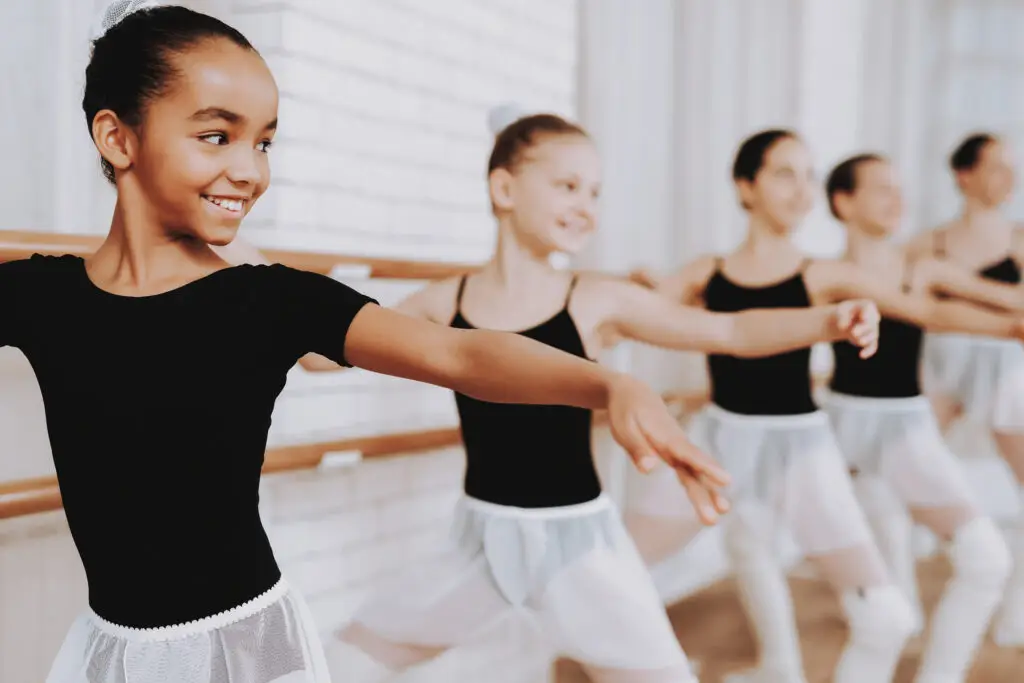As a studio owner for over 30 years, and a dance educator even longer, I’ve had the joy of helping thousands of children take their very first dance steps. If your child is twirling through the kitchen or bouncing to every beat in the car, you may be wondering: Is now the time to start dance? And where do I begin?
Here’s a simple guide to help you navigate those early decisions and set your child up for a positive, rewarding introduction to the world of dance.
1. What to Look For in a Dance Studio
Not all studios are created equal. When you’re exploring your options, look for a studio that focuses on age-appropriate instruction and a supportive, encouraging environment. A great studio should:
- Offer classes for young children that focus on movement, rhythm, and basic technique through fun and creative activities.
- Emphasize developmentally appropriate training. This means the instruction aligns with your child’s age and physical abilities—not pushing for skills too early.
- Employ qualified instructors with a background in early childhood education or extensive experience teaching younger dancers.
- Prioritize safety and structure. Classrooms should be clean and equipped with proper flooring, and studios should have policies in place to ensure a secure environment for all students.
At Spotlight, we’ve designed our preschool and early dance classes to build confidence, coordination, and a love for movement—all while making learning feel like play.
2. How Much Time Should You Commit?
For young dancers, less is often more. A single 30 to 45-minute class per week is usually perfect for children ages 3–6. This allows them to:
- Explore dance without feeling overwhelmed
- Develop listening and social skills
- Get used to a structured classroom setting
- Still have plenty of time to just be a kid!
As your child grows and becomes more passionate about dance, you can increase their weekly commitment. But starting small builds a strong, sustainable foundation.
3. Red Flags to Watch Out For
When evaluating studios, pay attention to the little things—they say a lot about the culture and priorities of the school. Here are a few red flags:
- Overly advanced choreography or costumes for young kids. Dance should be wholesome and age-appropriate—always.
- Instructors who focus too much on perfection rather than progress, joy, or effort.
- Lack of communication with parents. You should feel informed and welcomed, not like you’re left out of your child’s experience.
- High-pressure recital requirements or hidden costs. A recital should be a celebration, not a stressor.
If something doesn’t feel quite right, trust your gut. A good studio will make you and your child feel valued, heard, and excited to return.
4. How to Know Your Child Is Ready
Every child is different, but most are ready to begin around age 3. If your child:
- Can follow simple directions
- Enjoys music and movement
- Is comfortable separating from you for a short time
…then they’re likely ready to explore their first dance class!
We always encourage parents to schedule a trial class or come observe. It’s the best way to see how your child responds to the studio environment—and it helps ease first-day jitters for both of you.
Final Thoughts
Getting your child started in dance is a beautiful way to nurture creativity, confidence, and coordination. But more than anything, dance should be joyful. It should be the best part of their week.
At Spotlight Dance Center, that’s exactly what we aim to provide: a warm, welcoming place where kids can be themselves, express through movement, and grow through every plié and pirouette.
If you’re curious about how to get started, give us a call or stop by our Mentor studio. We’d love to meet you and help your little dancer find their spotlight.
– Miss Gina
